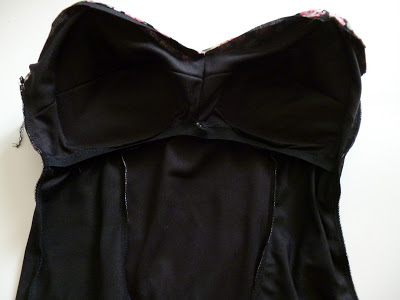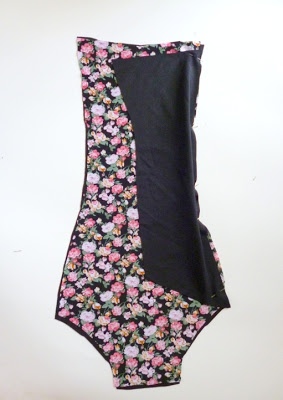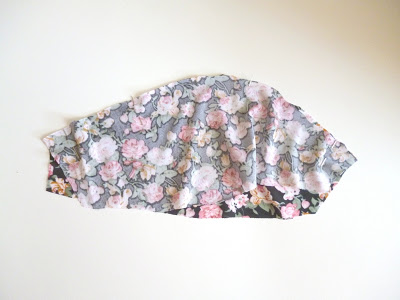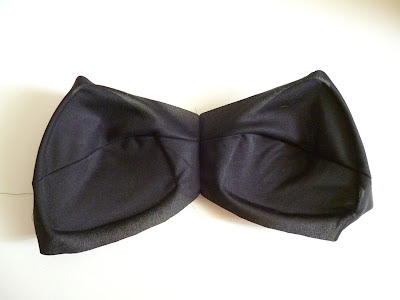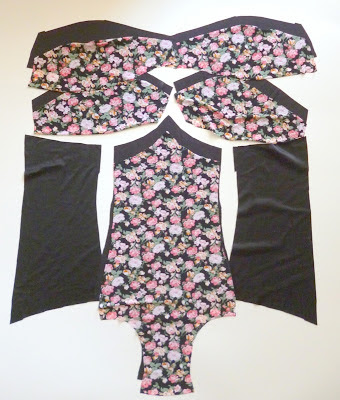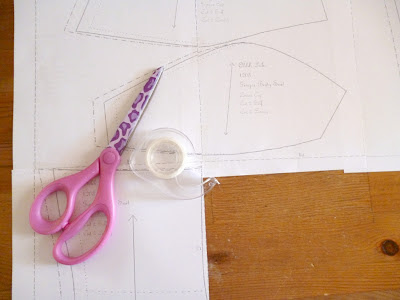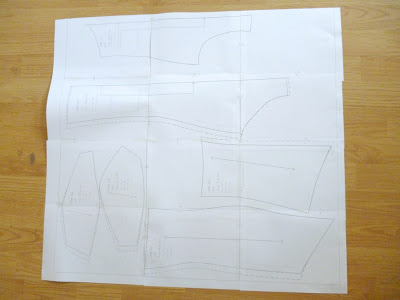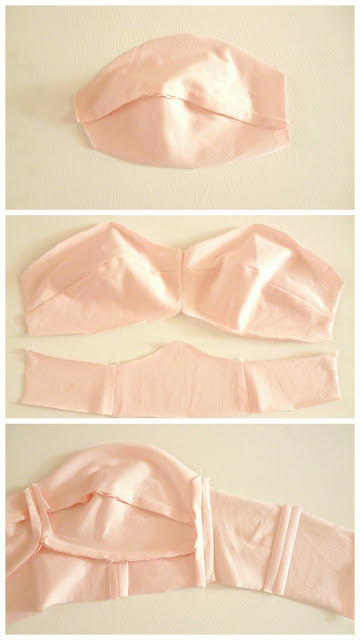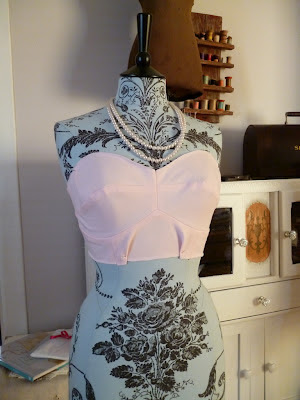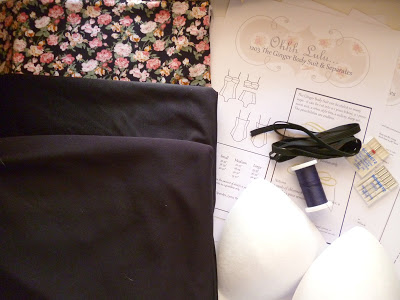As you begin to stitch, gently pull the elastic – you will see that as you stitch, the elastic will start to “wrinkle” the fabric it is attached to. I do not have a real formula for this… After sewing a million pairs of panties, you get the knack for how tight to pull it. If you haven’t sewn elastic like this, you might want to try on a few scraps, or on your muslin first to test out your tension. You do not want to shirr your fabric, you just want to create some tension so that your suit doesn’t ride up or fall down!
When my zig-zag stitch zags to the left, in towards the garment, I am stitching just over the elastic.
When I get to the end, I just overlap my elastic, and zig-zag in place. This is the most easy way to finish your elastic – For me this is a fun summer sewing project, and I am after easy. Alternatively, you can begin by sewing your elastic into a loop and stitching it on, OR sew your elastic on prior to sewing your crotch seam (and leave the top of one side seam open at the neckline). This way, when you sew your crotch seam your raw edges of elastic get hidden in the seam. If you do it this way, I highly recommend top stitching the seam down, or at least doing a bar tack to securely anchor the elastic down. There will be a lot of tension at that seam, and the last thing you want is it unravelling at the beach!
















